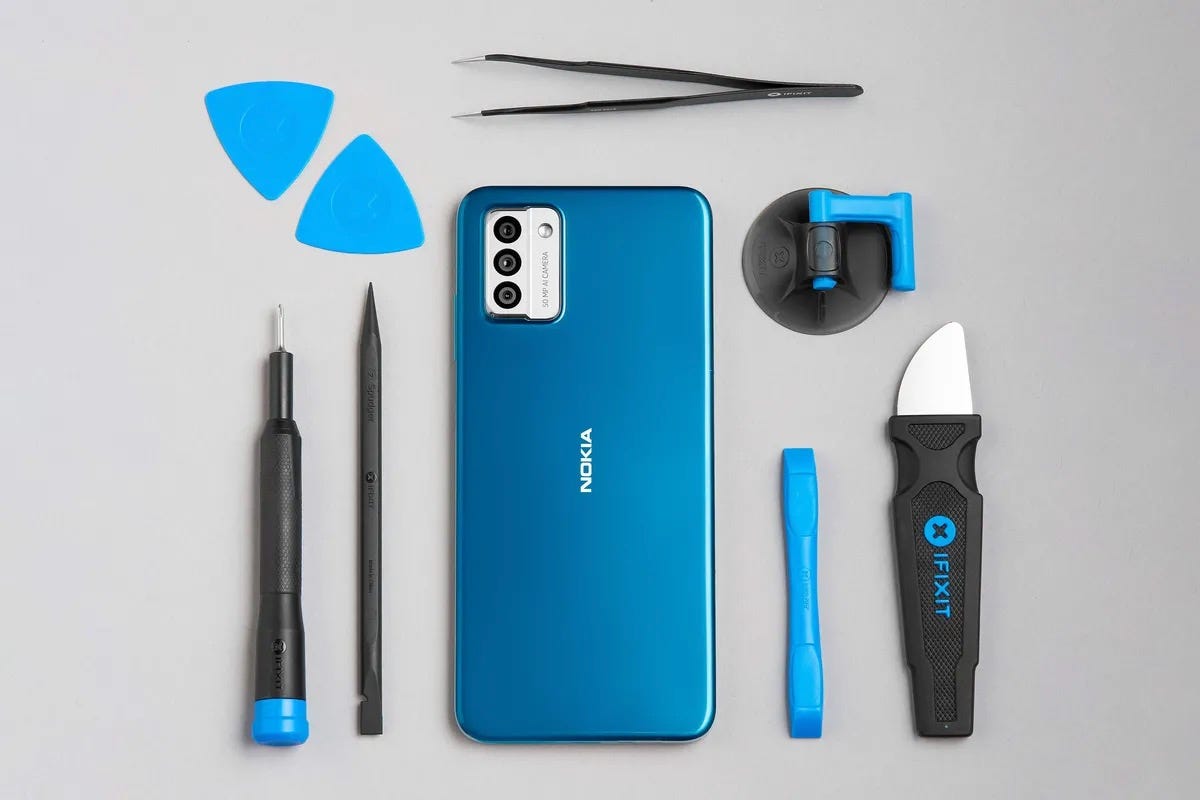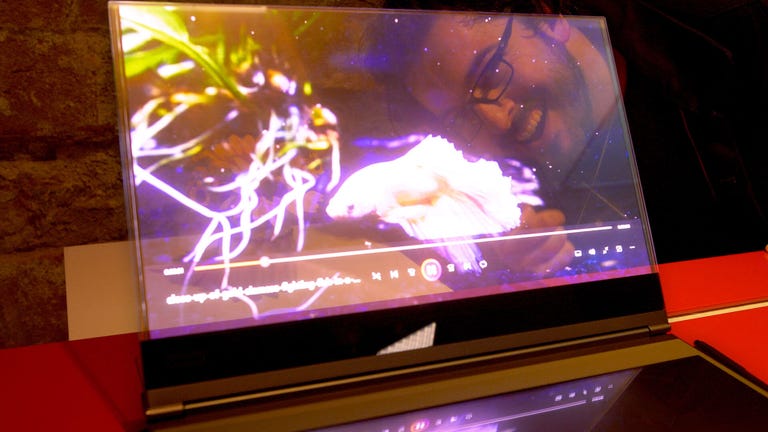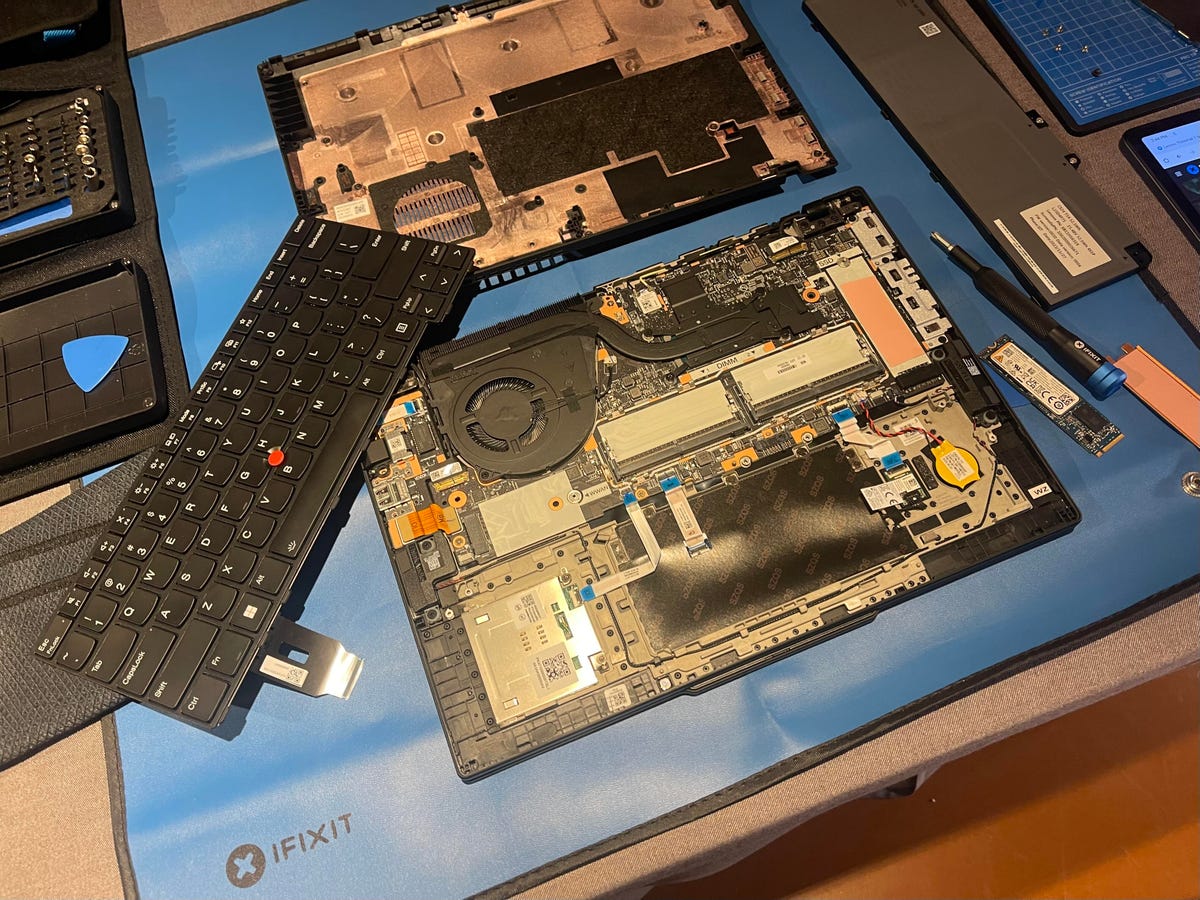A few feet away from me in the basement of a five-star Barcelona hotel is the showstopping transparent laptop concept that Lenovo unveiled at Mobile World Congress last week. I can’t be bothered with it, though: I’ve got a screwdriver in my hand, and I’m fixated on the run-of-the-mill ThinkPad T14 in front of me.
First, I remove the keyboard by unscrewing it from the laptop’s underside and then popping it out with a guitar pick. Next, I flip the bottom cover off and get to work disassembling its guts — battery first, then the Ethernet port.
Close by is a QR code I can use to access instructions if I get stuck, but I don’t need them. In part, this is because I’m pretty good at working it out for myself. I also have human help on hand, should I need it. Watching my progress are two of the engineers from iFixit who worked with Lenovo to ensure that this newly announced generation of ThinkPad T series laptops is fully repairable.
The ThinkPad is a PC beloved by IT departments worldwide. These laptops often live multiple lives, getting passed from one colleague to another and then to schools or communities. It makes sense that if Lenovo was going to make any of its products easier to repair, it would start with this one.
Device repairability is an increasingly important feature for tech companies to offer consumers. Making devices easier to repair extends the life of a product, meaning it doesn’t need to be replaced as soon. This in turn reduces electronic waste and saves people money in the process. When it’s done properly, it’s a win for the environment and a win for your wallet. As people around the world feel the impacts of the climate crisis and cost-of-living crisis, having the option to repair has never felt more important.
It’s also an issue that’s getting harder for tech companies to swerve around. Right-to-repair legislation is starting to pop up across Europe and the US, driven by rights organizations and consumer demand. According to research from analysis firm CCS Insight, 86% of consumers said they would be prepared to repair consumer electronics items at a reasonable cost rather than replace them with new models in an effort to help the environment.
Perhaps the staunchest advocate for repairability is iFixit, an online community, advocacy group and parts retailer.
“iFixit has been a trailblazer in the repair space providing detailed repair guides for consumers while lobbying for the right to repair and better designed, more repairable products,” said Ben Wood, CCS Insight chief analyst.
iFixit’s impact
When CEO Kyle Wiens started iFixit in 2003, the company was focused on working out how to repair Apple products by reverse engineering them — something it still works on to this day.
Twenty years later, Nokia phone maker HMD turned up at MWC 2023 with its first repairable phone, the G22 — designed in collaboration with iFixit. If you want to repair the G22 you can order replacement parts and the exact toolkit you need for the phone through iFixit, making it easy for anyone to fix.

Nokia’s G22 and DIY tools.
Wiens’ vision has always been focused on creating a sustainable consumer electronics industry. “It’s clearly not there, but it feels possible,” he said. “I feel like I have been tilting at this windmill, like, here’s what it will take.”
The road to mainstream repairability hasn’t been smooth — and there’s still some way to go. It occurred to Wiens early in the iFixit days that if he could work directly with tech companies, he could show them how to build a repair ecosystem. “It’s taken us a long time to convince them,” he said.
One of the biggest shifts, Wiens said, was the introduction of France’s repairability index in 2021, which applies a rating between 1 and 10 to consumer electronics depending on a product’s ease of repair. One drawback of the index is that companies are able to assign their own scores to products.
For a more objective view, it’s better to look at the scores (also out of 10) that iFixit assigns to products based on its own assessment of their repairability. The only company to hit a perfect 10 is Dutch social enterprise Fairphone, which puts sustainability and repairability at the very heart of everything it does.


Inside Lenovo’s ThinkPad T14.
HMD might not have come to the show with a repairable phone this year, but Lenovo did show up with the ThinkPad T Series, and its sister brand Motorola was the first tech company to ever work directly with iFixit. Wiens said he’s advised on laptop design before, but iFixit’s work on the T Series has been more extensive.
The fact that tech companies are starting to turn to iFixit for assistance in tackling the repairability challenge speaks volumes about the influence and expertise the company has accumulated. It may well be a partnership that sustainability-savvy buyers start to look out for when they’re about to drop big money on their next tech purchase.
“The growing consumer momentum around repairing devices to help the environment has aligned well with iFixit’s mission to support people who want their products to have a longer life,” Wood said. “It is encouraging to see that companies like Lenovo are seeing the benefit of partnering with them and producing more repairable products.”
As I reassemble Lenovo’s ThinkPad screw by screw, I marvel at how easy and quick it’s been for me to perform this light surgery. Wiens’ words — “If you can’t open it, you don’t really own it” — echo in my head. If I needed to replace the battery or even the keyboard, should I spill coffee over it, as I have in the past, I feel confident I could do it now.
“I just hate to be in a world where we have strangled the tinkering out of the mainstream,” Wiens said.
I inexpertly but successfully reattach the back panel. With tinkering this straightforward, I can’t imagine we’re at risk of that happening anytime soon. All you need is a screwdriver and a QR code and you’re good to go.
